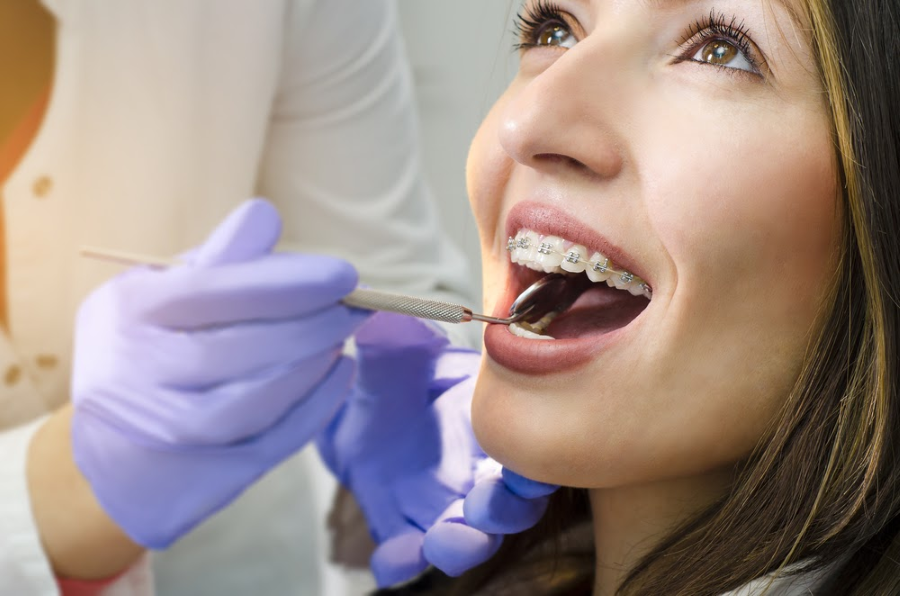All Star Family Orthodontics - Questions
Table of ContentsAll Star Family Orthodontics Can Be Fun For AnyoneThe Best Guide To All Star Family OrthodonticsHow All Star Family Orthodontics can Save You Time, Stress, and Money.What Does All Star Family Orthodontics Mean?The All Star Family Orthodontics PDFs

In addition, we use adjustable treatment routines, adaptable payment options and an enjoyable, delightful experience.
An orthodontist is a dental expert educated to diagnose, stop, and treat teeth and jaw irregularities. Orthodontists function with people of all ages, from kids to adults.
Malocclusion, or misaligned teeth, can bring about dental problems, including dental cavity, gum disease, and tough or unpleasant eating. Not every person is birthed with straight teeth. If you have a negative bite or big areas in between your teeth, you may want to seek advice from a dentist concentrating on orthodontic care.
More About All Star Family Orthodontics
(Image Credit Score: DigitalVision/Getty Images) Orthodontists use dealt with and detachable dental devices, like dental braces, retainers, and bands, to transform the position of teeth in your mouth. Orthodontic therapy is for oral irregularities, including: Crooked teethBite issues, like an overbite or an underbiteCrowded teeth or teeth that are also much apartJaw misalignmentThe objective of orthodontic therapy is to enhance your bite.
While you could assume of orthodontists as primarily for youngsters or young adults who need braces, they can deal with oral problems at any kind of age. Orthodontists go to college, dental institution, and orthodontic institution.
, yet not all dentists are orthodontists. They focus on two locations: Just how to properly and securely move teeth Exactly how to properly guide advancement in the teeth, jaw, and faceOnce an orthodontist has completed training, they have the option to become board accredited.
All Star Family Orthodontics Things To Know Before You Get This
Misalignment, or malocclusion, is the most common factor individuals see an orthodontist. It is genetic and is the result of size distinctions in between the upper and reduced jaw or between the jaw and teeth. Malocclusion causes tooth congestion, a twisted jaw, or uneven bite patterns. Malocclusion is usually treated with: Your orthodontist affixes steel, ceramic, or plastic square bonds to your teeth.
If you have only small malocclusion, you may have the ability to make use of clear braces, called aligners, as opposed to standard dental braces. Some people require a headgear to help relocate teeth right into line with stress from outside the mouth. After dental braces or aligners, you'll need to put on a retainer. A retainer is a custom device that keeps your teeth in position.

You might require to see an orthodontist if you have: Crowding or otherwise sufficient area for all of your teethOverbite, when your upper teeth come over your base teethUnderbite, when your bottom teeth are also far forwardSpacing or issues with gapsCrossbite, which is when your upper teeth fit behind your bottom teeth when your mouth is closedOpen bite or a vertical space in between your front base and upper teethMisplaced midline, when the center of your base and upper teeth do not align Remedying a dental malocclusion can: Make biting, eating, and speaking easierImprove the symmetry of our face and your total appearanceEase discomfort from temporomandibular joint problemsSeparate your teeth and make them less complicated to clean up, assisting protect against dental caries or dental caries It's frequently a dental expert who first notifications misaligned teeth during a routine examination.
All Star Family Orthodontics - An Overview
During your first orthodontic appointment, you'll likely have: A dental examPhotos taken of your face and smileDental X-raysPanoramic (360 degree) X-rays of your face and headImpressions to produce mold and mildews of your teethThese examinations will certainly help your orthodontist recognize how Learn More Here to continue with your therapy. An orthodontist is a dentist who's had training to treat your teeth and jaw.
Orthodontists may carry out surgery, exams,X-rays, - old bridge nj orthodonticsand even more to help you obtain an extra comfortable, healthier smile. An orthodontist is concentrated on your bite, so something like a cracked tooth would be dealt with by a dental practitioner. Orthodontists are dental practitioners but not all dental experts are orthodontists. Orthodontists are focused on your bite, or the method your teeth fit together, and the straightness of your teeth.

This first examination includes an aesthetic exam of your teeth and bite, X-rays, and possibly also 3D scans. By meticulously examining these components, the orthodontist can determine any kind of misalignments, crowding, spacing problems, or jaw disparities. Once a clear photo is established, the orthodontist will certainly go over individualized treatment options. This discussion will cover the sort of dental braces or aligners recommended (conventional metal braces, clear aligners like Invisalign, and so on), the projected treatment period, and any type of prospective obstacles or side results.
The Best Guide To All Star Family Orthodontics
While braces are the most frequently identified orthodontic therapy, orthodontists have a varied toolkit at their disposal. The certain approach chosen depends on the extent of the situation, the client's age, and private choices. These reliable braces utilize a system of braces bonded to the teeth and linked by cables.
These removable trays are tailor-made to considerably change the teeth's position. In situations of narrow jaws, palatal expanders can be utilized to produce area for proper tooth alignment.